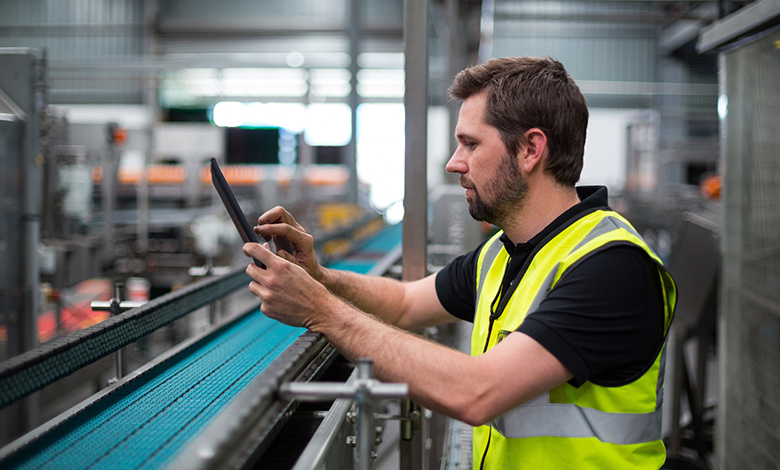Follow Ryan Spurr over
the coming weeks as we introduce specific use cases empowered by mobility
solutions and discuss the associated business outcomes contributing to
transformation in engineering, production, warehousing, logistics,
transportation, and field service.
For as long as I can recall, mobile devices found on the manufacturing floor have been limited to the lucky few—management—and primarily focused on smart phone technology. Over the last year, I’ve had the privilege of holding conversations with manufacturing leaders across America. In that time, it has become evident—perhaps more so than any time before—manufacturing leaders are changing their position and flocking to the business outcomes that warrant mobility investment. With deeper analysis, this should come as no surprise.
A Sign of Things to Come
Mobility hardware, software, services, and accessories have been heavily evaluated in other industries with great success. As an example, tablets exceeding pace of growth in discrete and process-based manufacturing—surpassing security, business continuity, disaster recovery, and other traditional infrastructures.
The industry is struggling to attract and retain talent, leaving 2 million out of 3.5 million open manufacturing jobs unfilled. Next-generation business systems, including enterprise resource planning (ERP), manufacturing execution systems (MES), supervisory control and data acquisition (SCADA), and learning management systems (LMS) are now being built natively atop of mobile devices and software as a service (SaaS) to ensure a superior user experience, quick time to value, integration of information, and access from anywhere is realized. If that were not enough, 44% of manufacturing companies “view disruption as existential threat,” creating a natural confluence around mobility platforms and acting as a practical vehicle for any manufacturer to start their digital business transformation.
Transformative Approach
People remain one of the most important components to successful manufacturing, and with that comes the challenge of attracting, retaining, and educating. In a high-employment economy with a shortage of skilled workers, both technology and knowledge management solutions are key to hiring workers and ramping them to productivity. Now add the challenge of regulation, safety, skills and certifications, pace of change, and communicating to the most diverse workplace ever. All this requires new business applications, transformative approaches to the way business is conducted, and consumption by employees via devices of their choosing.

Equipment, the other critical component in manufacturing, is also key to how companies—in concert with employees—improve throughput, reduce costs, enhance quality, and deliver on customer demand. With a diverse mix of legacy, homegrown, and cutting-edge technology operating factories, these devices must be properly operated, serviced, and monitored to ensure maximum performance 24 × 7. In fact, these devices have become so critical to the modernization of manufacturing, that downtime of any single machine often contributes to lost productivity and production delays. Mobility plays a larger role in terms of how the workforce supports, monitors, and services equipment to maximize operational excellence.
Mobility Drives Productivity
Not only have internal and external business forces changed how business gets done, but so has the technology. In the past, user interface devices served a single or limited set of functions—modern mobility solutions have evolved far beyond that narrow scope, growing into an all-encompassing toolset that drives workforce productivity from every angle. The factory mobility of today can scan, run applications, deliver training, track skills and certifications, communicate via cellular, VOIP systems, replace push-to-talk solutions, and much more. Most importantly, mobile devices, along with the right mix of business software, are significantly impacting key manufacturing KPIs—such as OEE improvement—eliminating waste, reducing overall work cost, improving knowledge capture, streamlining workflows, and onboarding employees faster at reduced cost levels. If you don’t have a formalized strategy around mobility, Industry 4.0, or other business transformation initiatives, you should seriously consider the productivity possible by identifying and issuing the right-fitting mobility solution to your direct labor and support employees. Don’t be disrupted and left behind—now is the time to start transforming the way your company manufactures.

